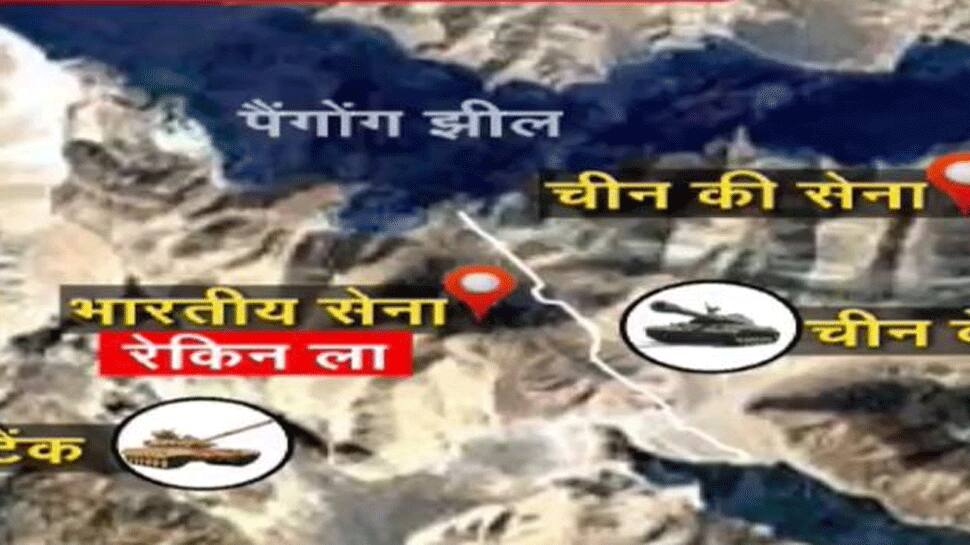NEW DELHI: As Indian Army and the People's Liberation Army (PLA) of China are engaged in the third round of talks in Chushul to diffuse the tension in the region following fresh skirmishes along the Line of Actual Control (LAC), fresh reports have surfaced that the Chinese PLA wanted to capture an important peak 'black top' so as to monitor the Indian posts and their activities near the dormant height.
The black top is in the southern part of Pangong Lake
Reports stated that the Indian Army thwarted the Chinese PLA's attempt to capture the important peak after an intense face-off on the night of August 28-29 there and occupied the dormant height within its territory. The Army also removed the cameras and surveillance system of the PLA after taking the point into its control. The Chinese Army has installed such equipment all along the Line of Actual Control (LAC) and use them effectively to monitor Indian activities and respond quickly whenever they find Indian patrols on the areas claimed by them.
China has been claiming that the height belongs to them and wanted to capture it to get into an advantageous position all along the southern bank of Pangong lake area and the nearby Spangur Gap, an open territory where Chinese armoured regiments were deployed.
Following the Chinese attempt, the Indian Army has significantly strengthened its presence on a number of 'strategic heights' around the Pangong lake besides further bolstering its presence in the area. A battalion of the Special Frontier Force was also deployed in the area. It is learnt that Chief of Army Staff Gen MM Naravane reviewed the overall situation in eastern Ladakh at a high-level meeting in the Army headquarters.
The sources said the Indian Air Force (IAF) has also been told to enhance its surveillance on increasing Chinese air activities along the LAC in eastern Ladakh.
According to reports, the Indian Army has also deployed T-72 and T-90 tanks in Ladakh and Demchok areas.
There have been reports that China has deployed J-20 long-range fighter jets and several other key assets in strategically located Hotan airbase which is around 310 kms from eastern Ladakh.
Sources said the Indian side has prepared very well for responding to the Chinese reaction in view of the action by own troops including a Special Operations unit and Sikh Light Infantry troops there. One of the Indian Army jawans also lost his life in an anti-personnel mine explosion while patrolling in the area.
In the last three months, the IAF deployed almost all its frontline fighter jets like Sukhoi 30 MKI, Jaguar and Mirage 2000 aircraft in the key frontier air bases in eastern Ladakh and elsewhere along the LAC.
Meanwhile, Union Defence Minister Rajnath Singh has chaired a high-level meeting at his residence which is also attended by S Jaishankar, Bipin Rawat, MM Narawane among others and reviews the situation in Ladakh.
On Monday, the Indian Army said the Chinese military carried out 'provocative military movements' to 'unilaterally' change the status quo on the southern bank of Pangong lake on the intervening night of August 29 and 30 but the attempt was thwarted by the Indian troops.
The Chinese and Indian troops are engaged in a standoff for over three months after the PLA troops marched into Indian areas in Finger area and other parts of the Ladakh sector.
















